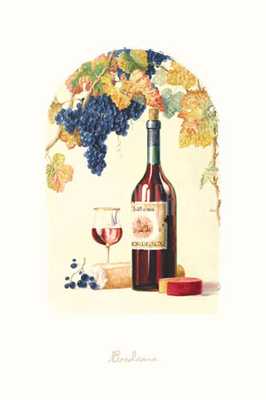Waiter there's a horse in my wine!

This book is now in stores in Australia, but it's hard to get.
Instead of searching high and low you can buy it online, use the link below
Buy it here
Here is a small extract of Jennifers writing dealing with reaction to some Australian winemakers move to Italian Varieties.
"That's no Barbera!" scoffs a journalist I'm travelling with in Australia. Enrico Viviano, director of Radio Toscana in Florence, has been on this rant for days. Too much oak, too much alcohol, too much fruit. In short, not Italian.
It takes a sour, orange wine with a tannic death-grip to finally elicit; "Now that's Barbera! You could drink this all day long," implying: and not fall off your chair and stain your teeth purple. I suppose to the untraveled Eskimo, what Manolo Blahnik makes does not much resemble a shoe, either.
Touring Australia with an Italian provides ringside seats to the seismic shock of two wine cultures colliding. Australians might be closer to Europe in their drinking habits, but their winemaking ethos is as different as it gets.
European winemaking is an art, involving as much instinct and old family lore as science. Government regulations ensure the same disadvantages to all: in bad vintages, no one has recourse but to make bad wine, badly. To hell with absolutist, international standards of quality -- they protest. It's about identity!
This is mystic mumbo-jumbo to the pragmatic Australian winemaker who packs a vast, viticultural bag of tricks and is not afraid to use it. Bad vintage? Simply import grapes from another region. The consistent, easy-drinking results may be pooh-poohed as "supermarket wine," but it conquered both England and America.
Lacking tradition, indifferent to appearances, Oz is free to do things that make Europe -- even America -- cringe. Like pioneering both screwcaps and casks (wine-in-a-box, to us) and so bringing yobbos and swillers of suds into the fold. Intuition, terroir, who needs them? Yellowtail, recently America’s number one red import, sprung neither from a vineyard nor a vision, but from the desk of label designer Barbara Harkness, who calls her ready-to-go brand service, "Just Add Wine."
Somewhere between European pessimism (“Why start? I'll probably fail.”) and American cockeyed optimism (“Every day in every way I'm getting closer to being a motivational speaker!”) threads the Aussie worldview (“Yeah, hell exists, sod it.”) As playwright David Williamson observes, "Most Australians… assume…that under the skin of a bastard lies an utter bastard." It's the sort of unshockable place where you can hear a little old lady observe that a cork is in “tight as a fish's ass."
As Americans know, the freedom that nurtures vigor also permits bad taste, a right I champion, even while pining for quaint, medieval towns, far from New World vulgarities.
Enrico, who lives in such a town, has a problem with vulgarity. Italians are more delicate, he explains. For instance, if you're staggering drunk, your problem is not too much wine, it's non basta mangiare -- not eating enough. But these wines, oily, purple, practically sending up a plume of alcohol! No one could mangiare basta!
We do witness one Australian concession to subtlety: The obvious, overdone, American oak, responsible for wines so reeking of coconut and vanilla that even their über-fruit gets buried, is being replaced, in a mad stampede to…obvious, overdone French oak!
They say it wasn't until France put the kibosh on names like Champagne, Burgundy and Hermitage, that Australia really found her style. I'm not so sure it mattered. In this galaxy far, far away, comparisons with REAL French wine seem irrelevant.
The Barossa style, the most familiar to Americans, developed long ago when German immigrants gave up trying to make the neat, cool whites of their homeland and succumbed, like an English colonial officer "going native," to the wild imperative of the land, which was to produce big, red, juicy Shiraz.
That is by no means the only style. Australia has its share of small producers and subtle wine. There are cooler-climate Pinot Noirs and Rieslings, and quite a few Italian varieties, it's just that we see so few of them here. I hope that changes soon, because they're delicious wines, even if they don't taste like Europe. And why should they? Better to let a thousand grapevines bloom.
From Waiter, there's a horse in my wine! by Jennifer Chotzi Rozen.
Buy it here




